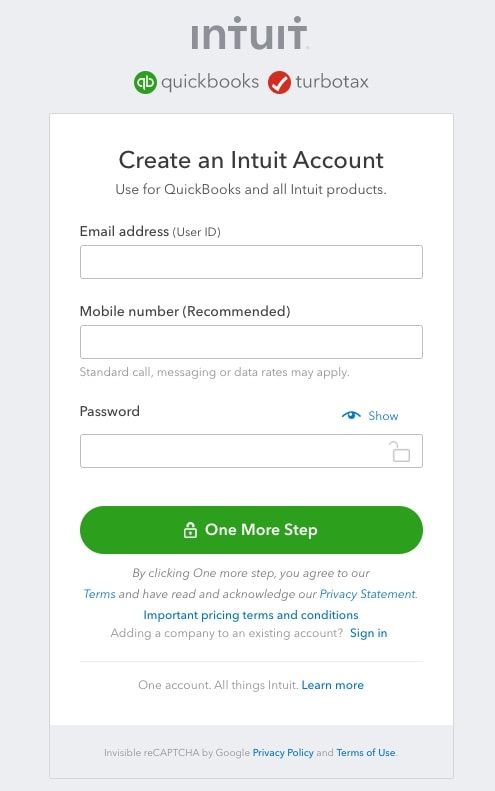Turn on suggestions
Auto-suggest helps you quickly narrow down your search results by suggesting possible matches as you type.
Showing results for
I have a UK Customer. I invoiced them in GBP (and GBP is set as their "home" currency in QBO).
For some reason they have paid in EURos. It is a small amount - not worth returning the money and getting them to correct their payment.
How do I put this payment through the books?
Solved! Go to Solution.
Thanks for posting again, @SGI,
At the moment, you can only link transactions with the same currency in QuickBooks Online. We're unable to directly apply the EUR payment towards a GBP invoice.
Your case is a special situation and so it needs a few steps to do. First, we’ll first have to create a new dummy bank account in the home currency to facilitate the movement between 2 different foreign currencies

We’ll first have to record payment of the foreign invoice. In the Receive Payment module, set the Deposit To field to Dummy Bank. Before saving the transaction, take note of the home currency (GBP) amount displayed at the bottom right.
Next, we’ll have to transfer this GBP amount from Dummy Bank to the EUR bank account.
If you have any questions, let me know in the comment. I'll be right here to help you with the customer payments. Have a good one!
Hello SGI, When they have paid it in Euros has it in your bank converted to GBP and there is an exchange gain loss so it differs from the invoice amount received?
Hello,
No, they have paid in EUR to our EUR account. Invoice is in GBP and money have arrived in EURos into EUR acc. So I need to link a GBP invoice to received EUR payment.
Thanks for posting again, @SGI,
At the moment, you can only link transactions with the same currency in QuickBooks Online. We're unable to directly apply the EUR payment towards a GBP invoice.
Your case is a special situation and so it needs a few steps to do. First, we’ll first have to create a new dummy bank account in the home currency to facilitate the movement between 2 different foreign currencies

We’ll first have to record payment of the foreign invoice. In the Receive Payment module, set the Deposit To field to Dummy Bank. Before saving the transaction, take note of the home currency (GBP) amount displayed at the bottom right.
Next, we’ll have to transfer this GBP amount from Dummy Bank to the EUR bank account.
If you have any questions, let me know in the comment. I'll be right here to help you with the customer payments. Have a good one!
While i am following the above steps, I still can see the amount in undeposited fund under Bank deposits. Although the net effect on dummy account is zero once i check the balance in the account but i wonder what is happening here. A little insight can be helpful here.
Thanks
Hello there, anjum.
One of the possible reason as to why stay on the Undeposited fund under Bank deposit is that you might have chosen it as the Deposit to account when receiving your payment. Make sure to set the Deposit to field to the dummy account when recording invoice payment.
Additionally, learn how to receive and record invoice payments. This ensures all the transactions are recorded and managed accurately in QuickBooks.
Please feel free to leave a comment if you have any other questions about managing your banking transactions. I'm always here to help. Take care.
Are these instructions if customer has paid into Euro instead of sterling acc
Hi AJ1603, thanks for joining this thread
We'll be happy to share some additional guidance on how to record this in your QuickBooks.
Did you refund the customer the payment from the EUR account, or are you looking to match the EUR payment against a GBP invoice to the customer?
Can I please ask when I process the invoice into the dummy account do I enter the figure paid into euro account or the invoice amount?
Hi AJ1603 When you're processing the invoice payment you'd enter the GBP equivalent of the amount received, we assume that would be the full amount of the invoice.
Hi, I have the same problem as the OP, euro customer paid in GBP. I have followed your workaround but I now have the transferred money sat in our Euro bank account and can’t work out how to pay off the outstanding Euro invoices.
Thank you for sharing the results of the troubleshooting, Laura113. This information will enable us to identify the appropriate steps to take in order to resolve the outstanding invoices.
Before we transfer the money to your Euro account, record the payment for the foreign invoices (in Euros) and deposit it to the correct account (GBP home currency). You can follow the steps shared by @Jen_D above.
After receiving the payments, transfer the GBP amount from your GBP account to your EUR bank account. If you are still facing the same issue, I encourage you to contact our QuickBooks Online (QBO) Care Team for further assistance. They will review your transactions and help you implement a permanent fix for the outstanding invoices.
Feel free to browse this reference for guidance on how to handle foreign currencies, and methods to apply them to your transactions: Multi-currency FAQ.
Stay in touch if you need further assistance managing your sales entries and other foreign transactions. We'll get back to ensure to provide the help you need.

You have clicked a link to a site outside of the QuickBooks or ProFile Communities. By clicking "Continue", you will leave the community and be taken to that site instead.
